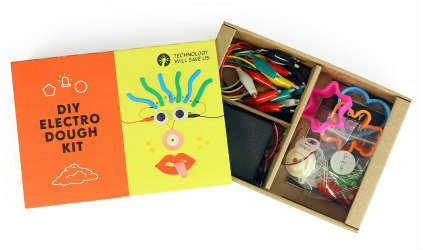Helen H. Moore's Blog, page 230
November 24, 2017
The 2017 No-Thanks List

Donald Trump; Kyrie Irving; Kellyanne Conway (Credit: Getty Images)
2017 hasn’t been a good year for anyone except Kevin Durant and Donald Trump — oh, and the Trump kids, too, plus Jared Kushner, and basically everyone who is a part of the ever-changing administration which must have the worst retention ratio in political history.
And then we lost some serious icons like legendary comic Dick Gregory; one of my favorite comedians, Charlie Murphy; Fats Domino, Chuck Berry, Prodigy from Mobb Deep, Jerry Lewis, Martin Landau, Robert Guillaume, the great Hugh Hefner, and Frank Vincent.
Honestly, I’d like ball this year up, dribble it straight down the lane and slam dunk it into the dumpster right next to all of Trump’s campaign promises, Bernie’s posters and Hillary Clinton’s election strategy. Hopefully, I can find a way to end this year on a happy note. I’m starting by trying to approach the holiday season in the most positive way possible, but I can’t do it unless I acknowledge everything that currently sucks, so here’s my 2017 list of things I can’t be thankful for.
Kanye West
Kanye West was once one of my favorite artists. His freshman album “College Dropout” changed hip hop and influenced some of the most popular acts today, like J. Cole and Kendrick Lamar. In 2017, we watched the 40-year-old rapper completely lose his soul as he dyed his hair blonde and happily went to greet President-elect Donald Trump. I’ll still wear his shoes, but I’m definitely not thankful for the new Kanye.
Donald Trump
Need I say more?
iPhone X
It kind of hurts watching iPhones make their way from amazing to irrelevant. And Apple is to blame, mainly because they release a new phone ever year and try to get us excited about the most mediocre upgrades in the world. “It’s .00000000000000007 pounds lighter, with a better camera!” Here’s an idea: maybe they should create a phone that can do something useful, like giving its customers free access to wifi globally, or at least give us a product that doesn’t freeze up halfway through watching a YouTube video.
Air Jordan sneakers
I grew idolizing Michael Jordan. I tried to mimic his game, attacked the basket with my tongue out and even walked like the dude. So of course I owned all of his sneakers. Before his last retirement in 2003, his retro kicks from the ’80s and ’90s became popular again, and true fans like myself loved them. But now, I wouldn’t be caught dead in a pair. The price has doubled and sometimes tripled as they release a new trashy color ever week. Goodbye, Jordans.
Kyrie Irving
I thought the Duke star turned Cavs leader was going to be the Pippen to LeBron’s Jordan. Their on-the-court chemistry was amazing when they beat Golden State, which had seemed impossible. The sky was the limit for that Cavs team until Kyrie broke it up by requesting a trade and going to Boston. Now both the Cavs and the Celtics look silly. So much for the NBA.
Kellyanne Conway
I’ll never be thankful for Kellyanne Conway — not only because she justified lying, or what she called “alternative facts,” but mainly because she’s pointless. She shouldn’t be on my television or floating across my timeline ever.
Now that these things are out of my system, I’m confident that I will have a peaceful, joyous holiday. The good folks of Salon are wishing you the same.
What to drink with your Thanksgiving leftovers

(Credit: Getty/bhofack2/Rimma_Bondarenko/Salon)
We put hours of planning into our Thanksgiving dinners, and one of the perks of cooking enough to feed an entire Olympic swim team is not having to cook real meals for the duration of the long weekend. Leftover meals are acts of spontaneity, and they have a tendency to devolve over the course of the weekend as supplies dwindle and motivation falls by the wayside. You can rescue some dignity by planning a cocktail menu to complement even the most shameful acts of refrigerator scavengery.
Level One: A balanced plate, reheated
It’s the day after Thanksgiving, and your fridge is full of bounty. It’s time for the reasonable sampling you meant to have yesterday before you face-planted into a Devil’s Tower of mashed potatoes. One plate; no seconds. A slice of turkey, a modest scoop of yams, a little bit of stuffing — not too many carbs, please! Green things, even. What the hey, there’s some salad left. (There’s a lot of salad left.) You’re reheating your main dish, setting out a separate plate for your leafy greens. You’ve even put a full set of silverware on the table. Isn’t it lovely to revisit such a reverent celebration of the harvest? You need a respectable cocktail worthy of the experience.
Pair it with: The Boulevardier
It’s a Negroni, but with whiskey. A sophisticated and balanced cocktail that dates back to the 1920s, this drink can be made with bourbon or rye, depending on your preference.
For full Thanksgiving theme cred, you’re in luck if you have a bottle of Wild Turkey on hand — in his new and already-essential bar companion, “Meehan’s Bartender Manual,” cocktail authority Jim Meehan recommends using Wild Turkey 101 Rye for his Boulevardier. The Boulevardier is a cocktail recommended by Eddie Russell, the junior half of Wild Turkey’s master distiller team — and the half who actually enjoys a cocktail, unlike his dad, the “Buddha of Bourbon” Jimmy — so consider that a recommendation right from a master’s mouth.
According to Meehan’s research, the original Boulevardier was an equal three-part split of rye, Campari and Italian vermouth. Meehan suggests doubling down on the whiskey, and really, who am I to disagree?
2 oz. Wild Turkey 101 Rye
1 oz. sweet Italian vermouth
1 oz. Campari
Stir with ice and serve it chilled and up, or with one of those big rocks of ice if you’re fancy. Put it in a proper glass.
Level Two: The Triple-T Sandwich
The leftovers are starting to get a bit picked over, but there’s still good stuff in the fridge, and you can stretch it out by layering it between two slices of bread. This layered turkey sandwich recipe from Spoon Fork Bacon is already legendary, but this is your moment. Play Guy Fieri in your own kitchen: Whoa, brother, is that celery salt? Get crazy. If you can fit it into your mouth, it counts.
Kentuckians love Thanksgiving weekend because it means making Hot Browns from leftover turkey. The Hot Brown is an open-faced sandwich made famous by the Brown Hotel in Louisville, and it’s basically a Mornay sauce-covered heart attack on a plate. What the Hot Brown is missing, two days after Thanksgiving, is a place for your leftover cranberry sauce — and there’s always leftover cranberry sauce.
Pair it with: Redhead or The Bardstown
The cranberry sauce I bring to Thanksgiving is a Bon Appétit recipe from 1991, which calls for dumping ¼ cup of bourbon onto your sugared cranberries after you pull them from the oven, and my twist on the recipe is to double the bourbon. Add a little cinnamon and you have an amazing dish, and there’s no reason why the combination won’t work in a cocktail, too. Vodka + cran is the summer you. It’s Cranbourbon Season now.
The Maker’s Mark Redhead is an idiot-proof recipe that also works with any wheated bourbon you have on hand that you don’t mind mixing. Maker’s is available everywhere, but Rebel Yell, Larceny, or Old Fitzgerald will do just as well. Fill a glass with ice, throw in however much bourbon your holiday requires, splash in some cranberry juice, and top off with soda water and a lime wedge.
The Bardstown is a remix of the Manhattan, substituting cranberry juice for the sweet vermouth, and bumping up the bourbon ratio. You’re welcome.
Pick a Kentucky straight bourbon you like, because you’ll be tasting it. I like Russell’s Reserve 10 year, Four Roses Single Barrel, or Old Forester Signature 100 proof.
2 ½ oz. bourbon
½ oz. cranberry juice
Chocolate bitters
Shake it with ice and serve up, and garnish with an orange peel.
Level Three: The Famous Bowl of shame
You’ve reached the sweatpants and binge-watching stage of your four-day weekend, and the leftover tubs are dwindling. Carefully balanced meals and inventive sandwich creations are a thing of the past. You’re pretty sure you know which tiny house these tiny house hunters are going to choose, and they are going to choose wrong. You’ve shuffled into the kitchen and dumped a handful of whatever’s left into a homemade Famous Bowl. Maybe you bother to heat it up. Maybe not. You’re living your worst and best life all at once.
Pair it with: A 3-2-1 Margarita
Margaritas are the mixed drink of choice in every strip mall American-Mexican restaurant in the land for one reason, as far as I’m concerned: It’s the perfect counterweight to a pile of carbs and cheese and grease. There are many ways to make a margarita, but I am a fan of this simple and beautiful ratio that calls for a ton of tequila and no extra sugar, because you know there might be some pie left in the back of the fridge.
3 parts tequila
2 parts Cointreau
1 part lime juice
Salt if you must, but be real — you probably already have enough on your plate.
Level Four: No pie left, red alert, this is not a damn drill
Your father-in-law has been watching Alex Jones YouTube videos without headphones and every single bathroom has been occupied for 36 hours straight. Practice deep breathing. You didn’t come this far on a long weekend, trapped in a too-small home with too many people, to lose it over your cousin eating the last slice of pie, the one you were saving for second breakfast. Imagine yourself in a room filled with puppies. Turn your ugly cry into tears of joy. You’ll all be going back to work soon, and what horrors await in your neglected inbox? Better enjoy yourself while you can.
Pair it with: The best sipping booze you have, neat
Now is not the time to freak out and end up in a viral video. Channel Jimmy Russell, that role model of good living and gracious wisdom. Be the Buddha of Bourbon you wish to see in the world. Pull yourself together in the mirror. Say it out loud, like Jimmy would: Just pour me some whiskey in a glass, please.
Need-to-knows before buying Google Home or Amazon Echo

(Credit: AP Photo/Mark Lennihan, File)
If you’ve seen the commercials, you know that Google Home and Amazon Echo – the sleek, voice-activated home assistants that do everything from turn off your lights to read your kids a story – are being touted as the smartest things since sliced bread. With their kid-targeted games, activities, books, and even homework help, what parent wouldn’t want one of these devices to replace screens and make life run more smoothly? But as many early adopters have come to realize, it takes work to make them useful. Otherwise, you’re the proud owner of a very expensive kitchen timer. And as with any artificial intelligence (AI) technology that “learns” your habits, the gains may not be as great as what you give up to use it. Find out what these devices can do, how well they work, and what the privacy issues are before you introduce one into your house.
What do I need to do to make them work? Pretty much right out of the box, folks can use voice commands to “wake” the devices (say: “Alexa” or “OK, Google”) and ask them to do simple things like set a timer, tell a joke, or read a weather forecast. But to do more, you need to dig into the companion smartphone apps to connect your accounts and enable your preferences.
Once you personalize your device, you’ll be able to stream music from services like Spotify, Amazon Music, or Google Play Music. You can also select preferred news sources, restaurant delivery services, and more. It can be hard to remember everything you have enabled on the device, and if you forget exactly how to ask for something, you’ll need to pull up your app.
How well do they work with kids? Both Amazon and Google offer tons of content for kids (called “skills” on Echo and “actions” on Home) from established providers, including Disney, Sesame Street, and Highlights magazine. You can use the device to play games, read audiobooks, recite jokes, provide homework help, and even activate guided Zen meditation for when your kids need to chill out. New stuff is being added to each service all the time, and your kids might enjoy browsing for features on your linked phone app and trying them out with you. It’s not unlike shopping for new apps – it takes time to find what you want, set it up, and figure out how it works. But even without kid-specific games, these assistants can be helpful to kids and families in basic ways, like looking up simple facts, doing math (no cheating on homework!), checking a sports score, and setting a time-out clock.
Are there any hidden costs? A lot of the skills and actions you can add are free, but you still have to pay for memberships and subscriptions – for example, to Amazon Prime, Google Play Music, or Spotify. Amazon and Google will be experimenting with other subscription models in the future, so to maximize the value of the device, you’ll need to stay on top of new features. If you’re interested in smart home products, including light bulbs, thermostats, and home security systems, be aware that they are more expensive than traditional versions and often require an extra piece of equipment.
What could go wrong? Though each service is trying to appeal to families, the most common uses of Alexa and Home are very practical, adult-oriented activities, like reporting commute times, creating shopping lists, and announcing upcoming calendar events. To make sure kids don’t get into trouble using the device’s basic tools, you may need to play around with settings (and set some verbal expectations).
Raunchy music. Remember, Echo and Home will only play music that’s connected to your account. So, to limit explicit lyrics, you should only link services that allow you to set parental controls, such as Amazon Prime Music, Google Play, and Pandora. You’ll need to set content filters in the apps themselves.
Unauthorized purchases. Make sure kids know to ask for permission before buying things or adding items to your shopping list. You can also prevent unwanted purchases by clicking a few settings in each device’s respective apps. In the Alexa app, you can turn off voice purchasing altogether or keep it on but require a PIN for all purchases. In the Google Home app in the Payments section, toggle off Pay with Your Assistant.
Social risks. Child-development experts and sociologists are warning about the impact interacting with AI has on kids. A kid growing up with a home assistant must learn to use the device’s way of interacting, including making demands, having limited conversational abilities, and other traits that don’t prepare you for the nuances of human communication. Anytime you introduce a new technology into your home, you’ll need to guide kids on how to use it and what the expectations are. It’s best to remind kids that even though Alexa doesn’t mind if you’re rude, parents do.
Creepy “drop-ins.” Both devices allow you to make phone calls (“Hey Google, call Toys ‘R’ Us!”). But Amazon is offering something called “Drop In” that allows you to make voice and video calls to an Echo device in another location – sort of like Skype or FaceTime. If you have devices in different rooms of your home, you can use Drop In like an intercom system to “drop in” and let the kids know dinner is ready. With room-to-room Echos, you can start listening immediately – no one has to answer the call. You can also use Drop In if you have elderly relatives living elsewhere that you need to check on. The feature has to be manually enabled for each contact you want to use it with, and if you Drop In on another home, the receiver can decline the call. If you use the screen-based Amazon Show, you’ll appear in a frosted window until the call is accepted. Imagine your best friend “dropping in” when you’re in the middle of potty-training – no thanks!
Should I worry about privacy? Absolutely. The privacy and security issues related to these devices are complex, evolving, and potentially very serious (and cannot all be covered in this article). If you have an Amazon or Google account, you’ve already accepted some of the privacy risks of online life. With Alexa and Home, the same companies that track what you buy, what you watch, where you go online, and even your contacts are right there in your home. And they’re listening. Each company offers some privacy settings in its apps (like the ability to delete your command history), and you can turn off the microphone when you don’t want it to hear you (although it comes back on when you ask for it … which is weird if it wasn’t supposed to be listening).
Neither company is super transparent about how it gathers, stores, and uses the information it collects, and both leave open potential future uses for all that data – essentially getting you to opt into a future transaction that has not yet been identified. Some experts speculate that the more comfortable people get with the device, the more Google and Amazon will infringe on your privacy. For example, they could give transcripts of audio recordings to third-party app developers.
What about kids’ privacy? This is a huge concern and was the biggest contributor to the cancellation of Aristotle, Mattel’s proposed kid-targeted home assistant. That device was nixed after an outcry over third parties collecting sensitive information about children. Both Echo and Home allow you to create individual user profiles for each member of the household, including kids. And both companies offer voice profiles for different family members with different privileges for each person – that’s right, you can train the devices to recognize your kids’ voices. Although kids’ accounts require parental consent, they supply Amazon and Google with lots of information about the littlest members of your household, possibly including matters you’d prefer to keep private, such as medical issues, citizenship status, or problems in school. The companies encrypt that data, and they don’t store it forever. But having that information “in the cloud” means it potentially could be used by third parties to whom you haven’t specifically given consent. Plus, it makes your information vulnerable to data breaches. For now, it’s safest to limit user profiles to adult members of the household.
What else do I need to know? One of the reasons Amazon and Google are vying so strenuously to be your go-to home assistant is because the brand you choose pretty much locks you into that company’s products and services. Each company offers a slew of related devices designed for its respective technology universe (for example, Google’s Chromecast and Amazon’s Fire TV Stick streaming media devices). Each company is also selling the content that plays on those devices. Whether you buy one is up to you. Being an informed customer is the best way to use it safely and get the most out of it.
The same old story: Why “Casablanca” persists

Humphrey Bogart and Ingrid Bergman in "Casablanca" (Credit: Warner Bros.)
When a movie is still talked about three quarters of a century after its debut, revered in the kind of hushed tones normally reserved for discussing a nation’s most precious cultural treasures, people often want to know why. In the case of “Casablanca,” that holy grail of classical Hollywood that turns 75 on Sunday, there is no easy answer.
Sure, there are the iconic performances by Humphrey Bogart, Ingrid Bergman, Paul Henreid, Claude Rains and company. There’s also the film’s auspicious timing, appearing as it did just weeks after General Patton’s troops deployed in Operation Torch declared victory in the North African city where it’s set. Then, too, there are its endlessly quoted lines (“Round up the usual suspects!”), crafted by screenwriters Julius and Philip Epstein, together with Howard Koch, and the many decades of packed revival screenings at repertory theaters and student film societies, not to mention innumerable television broadcasts and TCM airings.
While we may search in vain for a single reason that accounts for the magic of “Casablanca’s” enduring success, it can’t merely be considered “the happiest of happy accidents,” as critic Andrew Sarris once branded it. Even its theme song, “As Time Goes By,” — a Tin Pan Alley number from the 1930s written by Herman Hupfeld, which composer Max Steiner initially shunned — has in its lyrics a line that almost makes a deliberate claim on a deeper narrative foundation that is at once eternal, an ever-green of sorts: “It’s still the same old story.”
Perhaps this explains why screenwriters, novelists and composers still turn to “Casablanca” for source material. “We drink at the well of ‘Casablanca’ many times,” said television writer and producer Matt Selman, who’s had a hand in creating several of the episodes of “The Simpsons” that offer a satirical wink at the picture, in a phone interview with me in 2016. Today, it’s such an essential part of our cultural lexicon that you don’t even need to have seen the movie to recognize the references.
Last year alone brought us a pair of movies that paid homage to that most quoted of classics. In “La La Land,” a blustery love letter to old Hollywood, writer-director Damien Chazelle made a conscious decision not only to cast Emma Stone as an aspiring actress with an outsize Ingrid Bergman obsession, bedroom poster and all, but to have her work on the Warner Bros. lot at a café directly opposite of the set once used for Bogart and Bergman. There’s even the faint suggestion of a direct quote (“Of all the gin joints in all the towns in all the world”), or perhaps more of a thought bubble, delivered by Ryan Gosling’s character, and a recognizable nod to the famous bittersweet ending.
Similarly, in his deeply personal, and comparatively underrated, “20th Century Women,” writer-director Mike Mills incorporated his own mother’s love of Bogart movies of the 1940s into the script. In the film’s opening scene, as the voice-over narration given by the family matriarch Dorothea Fields (Annette Bening) describes the various things that she introduces her son to, when she gets to movies, the camera cuts to an iconic still of Bogart and Bergman on the airport tarmac in their trench coats and snap brim hats. This sort of subtle touch confirms a statement made by Umberto Eco in the 1980s: “Casablanca” is not just one movie, it is “the movies.”
This same tendency to draw on “Casablanca,” and to weave strands of its celebrated story into a new plot, can be found in several highly successful recent novels as well. Adam Johnson’s Pulitzer prize-winning “Orphan Master’s Son,” published in 2012 and set in modern-day North Korea, involves a furtive viewing of the contraband DVD on a laptop in Pyongyang. Its story offers inspiration for a daring escape to America in the absence of letters of transit.
More recently, Amor Towles’ enormously popular novel, “A Gentleman in Moscow,” includes a pivotal late chapter in which the novel’s protagonist, Count Alexander Rostov, watches the movie with a former Red Army colonel. In addition to adding an extra layer of narrative complexity, the episode allows the novel’s protagonist — and, of course, readers along with him — to indulge in the film (“when the smoke from Rick’s cigarette dissolves into a montage of his days in Paris with Ilsa, the Count’s thoughts dissolved into a Parisian montage of his own”).
As Ingrid Bergman once observed of the film late in life: “I feel about ‘Casablanca’ that it has a life of its own. There is something mystical about it. It seems to have filled a need, a need that was there before the film.” Many decades later that need does not yet seem to have left us, and I’m not sure that’s a bad thing.
* * *
Noah Isenberg is the author, most recently, of “We’ll Always Have ‘Casablanca': The Life, Legend, and Afterlife of Hollywood’s Most Beloved Movie.” You can follow him on Twitter: @NoahIsenberg.
November 23, 2017
How do we keep Trump from launching nuclear war?

(Credit: AP/Evan Vucci)
How do you keep an impulsive and ignorant president, a man who has been described by his own Secretary of State as a “f**king moron,” from launching a nuclear war?
That terrifying question, often asked worriedly, privately or rhetorically over the last months, is echoing ever more loudly this week after President Trump insulted another inexperienced authoritarian nuclear commander, North Korea’s Kim Jong-un.
Trump described Kim as “short and fat,” and the 33-year-old dictator responded by sentencing Trump to death. The nightmare of nuclear-armed boys in the playground of geopolitics has come to life.
The U.S. nuclear command and control system, established in 1946, was designed to keep nuclear decisions out of the hands of war-mongering generals and put them in the hand of elected civilians leaders. As a result, a juvenile president has the authority to unleash thousands of nuclear weapons within minutes. There are some 4,000 nuclear warheads under Trump’s control.
Earlier this week, the Senate Foreign Relations Committee held a hearing on the command and control of nuclear weapons for the first time in 41 years.
“We are concerned that the president is so unstable, so volatile, has a decision-making process that is so quixotic that he might order a nuclear weapons strike that is wildly out of step with U.S. national security interests,” said Sen. Chris Murphy (D-Conn).
Sen. Bob Corker (R.-Tenn.), chairman of the committee, acknowledged that senators, including Democrats and Trump’s fellow Republicans, have raised questions about Trump’s authority to wage war, use nuclear weapons and enter into or end international agreements. Last month Corker worried aloud that Trump might be putting the United States “on the path to World War III.”
William Perry, Secretary of Defense in the Clinton administration, who said he was “terrified” by trends in nuclear proliferation before Trump took office, says the American people cannot count on Trump’s advisers from restraining him in a crisis.
Perry says he knows and speaks with James Mattis, Trump’s defense secretary, and he thinks Mattis understands the nuclear threat well. But as Perry told Politico this week, he also doesn’t think Mattis would necessarily be able to do anything if Trump decided to go ahead with a strike.
“The order can go directly from the president to the Strategic Air Command. The defense secretary is not necessarily in that loop. So, in a five- or six- or seven-minute kind of decision, the secretary of defense probably never hears about it until it’s too late. If there is time, and if he does consult the secretary, it’s advisory, just that,” Perry explained. “Whether [the president] goes with it or doesn’t go with it—[the secretary] doesn’t have the authority to stop it.”
Retired Gen. Robert Kehler, commander of U.S. Strategic Command from 2011-’13, told the Senate Foreign Relations Committee he would have refused to carry out a nuclear first strike on presidential orders if he believed it did not meet the requirements of proportionality and necessity under the law of armed conflict. “I would have said, I’m not ready to proceed,” Kehler said.
After the hearing, Senator Ed Markey (D-Mass.) told the Guardian, “I don’t have confidence that a military chain of command would reject an order by the president to launch nuclear weapons in a preventative nuclear war situation.”
Markey and Rep. Ted Lieu (D-Calif.) have a solution: legislation to bar the president from launching a first nuclear strike without a declaration of war by Congress. The president would, of course, still have the power to retaliate if America was attacked, but the bill could help restrain a trigger-happy president.
“I do not see a legislative solution today,” Corker said, after the hearing, “but that doesn’t mean that over the course of the next several months one might develop.”
The obstacles to meaningful action to restrain a madman are many. The first is Trump’s egomania. Perhaps in deference to Trump’s thin-skinned personality, Corker took care to say his hearing was not about Trump.
“This is not specific to anybody,” Corker felt obliged to say, lest the president take the issue personally.
House Minority Leader Nancy Pelosi said the same thing last month when she called for legislation to bar the president from using nuclear weapons unless the United States is attacked first.
“It has nothing to do with him,” she said. “It has to do with the presidency — any president who is there.”
A second problem is that, over the last 75 years, Congress has ceded its constitutional power to declare war to the Executive Branch. The last time Congress approved a declaration of war was 1942 when the United States was moving against Nazi-controlled Romania.
There was no declaration of war for Korean, Vietnam, the 1991 Gulf War, or the invasion of Iraq in 2003. Once Congress cedes a power to the president, it is hard to take it back. The best hope is that Congress is becoming scared enough to act. The willingness of Corker, a senior Republican, to at least contemplate legislation to control Trump at some point, is a welcome sign of progress, however slight.
“I put this in the category of urgent,” Pelosi said. “We each take an oath to protect and defend. If Congress doesn’t act, we might wake up to a mushroom cloud and the nightmare of ‘It’s too late.'”
Jefferson Morley is AlterNet’s Washington correspondent. He is the author of the forthcoming biography The Ghost: The Secret Life of CIA Spymaster James Jesus Angleton (St. Martin’s Press, October 2017) and Snow-Storm in August: Washington City, Francis Scott Key and the Forgotten Race Riot of 1835.
Even unpalatable foods taste good to the brain

(Credit: Lightspring via Shutterstock)
 When we experience something painful, our brain produces natural painkillers that are chemically similar to potent drugs such as morphine. Now research suggests these endogenous opioids also play another role: helping regulate the body’s energy balance.
When we experience something painful, our brain produces natural painkillers that are chemically similar to potent drugs such as morphine. Now research suggests these endogenous opioids also play another role: helping regulate the body’s energy balance.
Lauri Nummenmaa, a brain-imaging scientist at the University of Turku in Finland, and his colleagues measured endogenous opioid release in the brains of 10 healthy men. The subjects were injected with a radioactive substance that binds to opioid receptors, making it possible to visualize the receptors’ activity using positron-emission tomography.
The study found evidence of natural painkillers in the men’s brains after they ate a palatable meal of pizza. Surprisingly, their brains released even more of the endogenous opioids after they ate a far less enticing — but nutritionally similar — liquid meal of what Nummenmaa called “nutritional goo.” Although the subjects rated the pizza as tastier than the goo, opioid release did not appear to relate to their enjoyment of the meal, the researchers reported earlier this year in the Journal of Neuroscience.
“I would’ve expected the opposite result,” says Paul Burghardt, an investigator at Wayne State University, who was not involved in the work. After all, previous human and animal studies led researchers to believe that endogenous opioids helped to convey the pleasure of eating.
Nummenmaa, too, was surprised. His group’s earlier research showed that obese people’s brains had fewer opioid receptors—but that receptor levels recover with weight loss. “Maybe when people overeat, endogenous opioids released in the brain constantly bombard the receptors, so they [decrease in number],” he says.
Why more opioids flooded the brain after the goo versus the pizza remains a mystery, but the researchers speculate that faster digestion of the liquid meal may have produced more of the chemicals at the time of the scan, 15 minutes after eating.
The new results may indicate that opioids play a wider role in energy metabolism than scientists previously thought. One possibility is that the opioid system is triggered by the satisfaction of a full stomach and replenished energy, Nummenmaa says.
“If you take a step back and look at conditions that activate opioid release — pain, feeding, pleasure — they are all related to homeostasis,” or keeping the body’s energy in balance, he explains. “The most interesting thing is that eating triggered the system even in the absence of sensory pleasure.”
This article was originally published with the title “Food High”
Here’s how to avoid identity theft while shopping online

(Credit: AP)
There always seems to be an online sale these days, and even holiday shopping doesn’t have an official starting point anymore as major retailers kick off “Black Friday” and “Cyber Monday” deals earlier each year. No matter which day you plan on starting, ’tis the season to spend, but an important thing to keep in mind while clicking away is the safety and security of your private information.
According to Michael Bruemmer, vice president of consumer protection for credit reporting agency Experian, about 15.6 million people experienced identity theft in some form in 2016. In an interview with “Salon Now,” Bruemmer said the problem has gotten much worse in recent years because more people are looking for convenience and are therefore shopping online. Additionally, because people are using multiple, interconnected devices, there is more opportunity for private information to be accessed.
Something that hasn’t changed over the years, according to Bruemmer, is that people make careless mistakes. There are no guarantees of safety when you’re shopping online, but Bruemmer says these are critical steps you can take to avoid being a victim of fraud. For his top three tips, watch the video above. For a more detailed breakdown, keep reading.
DO:
Check your credit report on a regular basis
This allows you to see if there are any new accounts opened in your name, or any new inquiries that you didn’t initiate that someone else may be conducting in an attempt to steal your identity.
Use different passwords
This is annoying, but important. If you use the same password for every website you shop on, a hacker can access a treasure trove of your accounts and information. Switch it up, and don’t write them down. Your brain may thank you one day for all the exercise.
Monitor your transactions
Whether it’s credit card transactions or bank statements, make sure the receipts add up and check for small charges — that’s often a way hackers test the waters to see if the card works. Setting up notifications can make staying on top of your accounts easy.
Make sure your anti-virus software is up to date
We all hate those pesky update reminders that pop up on our computers, but making sure your devices are equipped with the latest software can go a long way.
DON’T:
Use public Wi-fi
Public networks are convenient, but they’re not secure. Someone sitting next to you in a coffee shop might be cute, but they could also be hacking into the network and creeping on your financial transactions.
Shop on unknown sites
This is not great news for small businesses, and large retailers are certainly not immune to hacks, but Bruemmer says that shopping with a trusted source is important. Look for an “s” after the “http” in the URL, which signifies the connection is secure. If you do take a chance with an unknown website, read the reviews and see if other customers have had a bad experience.
Despite the millions of people who have been affected, figures show that many consumers don’t take the threats to their online security seriously. A 2016 survey from Experian found that 23 percent of respondents said they would risk becoming a victim of identity theft for a good Cyber Monday deal. Come on, people!
Identity theft is no joke, and can range from having your credit card information stolen to people opening accounts in your name, tax ID theft, and even medical IDs being stolen. According to Bruemmer, it takes people an average of 42 hours of their own time to unwind the mess created by identity theft. He also says that the idea that the perpetrator is some 14-year-old sitting in his basement is the exception and not the rule. Nation-states, organized crime syndicates, or other malicious actors have entire teams of people set up trying to make a business off of your information and your money.
Passing along consumer safety tips to your friends and family might be the best gift you could give them. Since that probably won’t be appreciated, go forth and shop smart.
Thank you: This Thanksgiving I have my lost story journal back

(Credit: Salon/Ilana Lidagoster)
July 5, 2017: The date that I realized my story idea journal was missing.
I recovered it a month-and-a-half later, so this story doesn’t end with nearly as much heartbreak as it could have. In fact, that is precisely the reason why I’m writing about this subject on Thanksgiving: I am incredibly grateful that something of incalculable value to me, and which I had thought was lost, wound up being found.
But why does it matter so much to me?
That’s a somewhat tough nut to crack. The journal hearkens back to a period in my life — 2008-2010, if I had to roughly estimate — when I dabbled in playwriting. My mentor was three-time Tony Award nominee Arthur Kopit, who helped me convert one of the ideas in that notebook (“The Anthill”) into a full-length piece that was performed via a reading at The Lark Theatre in late 2009.
While that was the only piece of mine which ever got off the ground in even the tiniest way, I had dozens of other ideas in a notebook that I cherished. They may not have been developed into fully realized works of art, but some part of my subconscious assumed that as long as they were preserved in that notebook, I could refer to them and one day try to develop them out.
So what to do when a treasured receptacle of one’s creative work goes missing?
I contacted several other friends who have had similar predicaments (it’s surprisingly common, at least based on my anecdotal observations) and found that their coping mechanisms were surprisingly akin to coping with any other form of grief. First there was a stab of terror, followed by denial and eventually an ability to accept the terrible thing that had happened. As with all losses that require mourning, though, every so often a trigger in the outside world would prompt me to remember what it was that has gone missing.
Yet what exactly was I mourning?
A number of obvious things come to mind: The loss of potential expression . . . even though it has become progressively less likely with each passing day that any of those story ideas will ever be converted into actual plays. The record of my growth as a creative thinker . . . even though my published work, though encompassing thousands of articles, contains nary a single fictional piece.
As the use of those caveats indicates, I’m not sure what the “real” answer to that question is. What I am sure of, though, is that the irrational nature of my gratitude to have found that journal doesn’t make it any less potent.
That is why, to everyone reading this article, I hope you will spend some time this Thanksgiving expressing appreciation for the things you can’t explain appreciating. Maybe it’s a journal or diary of your own, or maybe it’s some other object from your past that has sentimental value. Maybe it’s an object so cheap that it borders on worthless, but to you it has immense value. Or maybe it’s an object that does have considerable financial value, but which you would never sell for reasons you can’t quite explain.
These may be intangible qualities, but they carry just as much weight as many of the other factors we use to determine thankfulness on this holiday. Yes, I am grateful for my family, friends and other loved ones, but it doesn’t require any boldness to state as much in this culture. Yet saying that I am thankful to have recovered a precious artifact from my past — one that may or may not have actual intellectual value, depending on whether the ideas in there are any good — makes just as much sense as my inclusion of the more platitudinous expressions of gratitude.
As such, it will play an integral role in me having a Happy Thanksgiving.
2017 holiday gift guide: Nostalgia gifts for digital kids

(Credit: HOLGER HOLLEMANN/AFP/Getty Images)
Tech toys and gadgets are always big winners with kids when it comes to holiday gift giving, but a new trend is shaking things up in a big way: nostalgia. The “good ol’ days” are back and better than ever with these old-school products that have been reinvented with a digital twist.
In the era of “smart everything,” a lot of items have been unnecessarily upgraded (do we really need a Wi-Fi-enabled toaster?). But these kid-friendly gift ideas have integrated technology in ways that make them more functional, more useful, more relevant, or just plain cooler for the latest generation of “digital natives.”
So if you’re a parent with a retro vibe or you’re looking for an awesome gift for a kid in your life, we got you covered. And if you’d prefer a low-tech or low-cost alternative or stocking stuffer, we have those, too. Everything you need to give the trendiest gift of the holiday season is right here, so check out these throwbacks with a twist.

DIY Electric Dough Kit
Price: $29.99
Kids love playing with dough, but what if it could teach them all about electronics at the same time? This DIY kit does exactly that. It comes with nearly everything you need to make your own colorful dough that conducts electricity, including the wires, LEDs, and buzzers kids can use to build circuits and more for electrifying fun.
For more tech/dough combos: Play-Doh Touch Shape to Life Studio, $24.99

3Doodler Start
Price: $49.99
Drawing goes high-tech with this kid-friendly 3D printer pen. This gadget allows kids to draw colorful creations in thin air using a safe plastic that cools and hardens almost instantly. It’s best for older kids, but it’s an awesome way for budding artists to discover robotics, architecture, and design.
For more ways to bring art to life: Crayola Color Alive interactive coloring books, $5.99-$17.99

I-Loom
Price: $39.99
With this device/app combo, friendship bracelets have never been so cool or easy. The I-Loom not only keeps all the strings in place, but it holds a tablet (not included), so kids can use the premium app to create a custom pattern for their bracelet design. The app even guides them start to finish through the weaving process.
For more crafts you can find online: Elmer’s Galaxy Slime Starter Kit, $16.76

Tamagotchi
Price: $14.99 (suggested)
All ’90s kids (and their parents) will remember these super-needy virtual pets on a keychain. In honor of the Tamagotchi’s 20th anniversary, Bandai is bringing it back for a limited revival, hoping to win over new fans among current kids.
For more pocket-sized pets: Fingerlings, $14.99

Beasts of Balance
Price: $99.95
This digital/tabletop hybrid balancing game takes stacking blocks to a whole new level. Beasts of Balance lets you stack animals and shapes in the real world, and watch them evolve in a virtual world. If the tower falls, an on-screen volcano counts down how long you have to rebuild before it’s game over.
For more digital-inspired tabletop fun: Operation: Fallout S.P.E.C.I.A.L. Edition, $35.00

View-Master Virtual Reality Viewer
Price $29.99
Parents (and grandparents) will remember the classic View-Master viewers that cycled through 3D photos with the push of a lever. But as 3D technology has advanced, so has the viewer. This VR headset gives a retro look to cutting-edge Google Cardboard technology, so pushing a lever sends kids into a virtual 360-degree visual experience.
For more vintage looks for your modern tech: Game Boy phone case, $17.99

3-Speed Vintage Bluetooth Turntable
Price: $59.99
Tweens and teens are discovering vinyl, much to their parents’ delight. But sometimes they crave the convenience of streaming the latest hits. That’s what makes this record player such a cool combo for the music lover in your life. Play any vinyl record or connect the built-in Bluetooth speakers to a mobile device and rock out.
For more speakers with a throwback vibe: Bluetooth Lava Lamp Speaker, $49.99

Polaroid Snap Touch Instant Digital Camera
Price: $179.99
Before there were Instagram filters, there were instant cameras. This modern version from Polaroid isn’t cheap, but it may inspire a new passion for photography. With a digital screen and instant print, tweens and teens can take pics, decide if they like them, then print them right there. And with MicroSD storage and Bluetooth compatibility, they can even post the pics to social media after (which is a great time to discuss responsible posting).
For more digital photography with a twist: Pixlplay Smartphone Camera, $29.95

Super NES Classic
Price: $79.99
Coming off the huge success of NES Classic in 2016, Nintendo has rereleased another vintage game console for 2017, and it’s selling like hotcakes. If you’re lucky enough to already have one (or if you are able to time it just right with a limited restock), you’ll get a miniaturized version of the 16-bit ’90s Nintendo console, complete with two controllers and 21 retro games like Super Mario Kart and The Legend of Zelda preloaded, perfect for gamers of all ages.
For more retro gaming: ’80s Mini Arcade Game, $17.99
Yes, I’m thankful for Donald Trump

(Credit: Salon/Peter Cooper/Getty)
On Thanksgiving, some people are thankful for family and great friends, while others find joy in traveling, financial gain or great food. But me? Well, I’m thankful for Donald Trump.
Yes, Donald Trump the reality TV star, also known as the every-other-day-a-new-scandal-brewing, intensely orange, Putin-loving 45th president of the United States.
I know you are wondering if I’ve lost mind. I’m proud to tell you: not yet. You see, I was depressed like everyone else when he won the election last November. And the after-effects were everything we thought they would be. There’s been no wall built, no new health care bill, no social mobility for white working class people in middle America. Basically nothing he promised to his voters seems to be happening, which doesn’t really bother me because I’m on the other side, although our country being the laughing stock of planet Earth isn’t fun.
I thought no good could come from Trump’s presidency, until I realized that you can’t breed revolutionaries at the highest level until you have a silly person leading your country. Would NFL players be so willing to visibly resist injustice without Trump in charge? Would the Democrats be energized and offering real solutions without Trump trying to dismantle Obama’s legacy? Would all of the wannabe presidents still be willing to run in 2020 if Trump didn’t show them how difficult and stressful being president can be? Has anyone heard from the Kanye 2020 campaign lately?
To celebrate America being led by one of the silliest leaders ever, watch The Salon 5 for five reasons why you should all be like me and be thankful this year for Donald Trump.
Tune into SalonTV’s live shows, “Salon Talks” and “Salon Stage,” daily at noon ET / 9 a.m. PT and 4 p.m. ET / 1 p.m. PT, streaming live on Salon and on Facebook .





